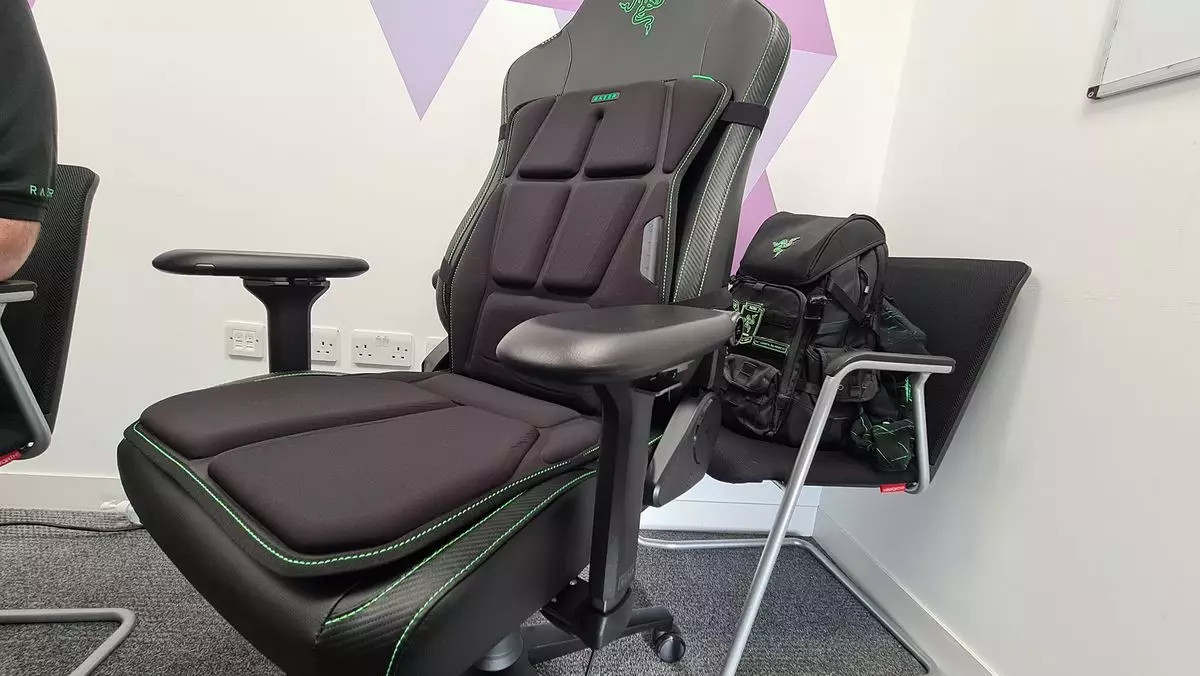The realm of gaming has continuously evolved, pushing the boundaries of immersion through technological advancements. Recently, Razer unveiled its latest innovation aimed at enhancing the gaming experience: the Razer Freya, a haptic gaming cushion. This device represents a novel approach to immersive gaming, but one must critically assess whether it truly enhances gameplay or merely adds another gadget to the gaming ecosystem.
The Razer Freya is designed to be effortlessly integrated into a standard gaming chair. Constructed with six padded regions that house individual motors, it is intended to provide real-time haptic feedback during gaming sessions. Users simply strap the device onto their chair, connect it, and set up the accompanying Razer Synapse 4 application to calibrate the settings. This user-friendly design promises to make the Freya accessible to a wide audience, regardless of their gaming chair genre.
One of the strengths of the Freya is its compatibility with various gaming titles. Notably, games like *Final Fantasy XVI* and *Hogwarts Legacy* come with built-in support for haptic feedback. Additionally, Razer’s integration of an Unreal Engine 5 plugin intends to simplify future game developments, potentially leading to a broader range of supported titles. Yet, while this lays a solid foundation, the reliance on developers to embrace this technology remains a significant uncertainty.
The primary objective of the Razer Freya is to transport players into the depths of their games by simulating physical sensations through vibrations. During hands-on testing, users can feel the motions of combat reflected in the sensations reverberating through them. In high-stakes scenarios, such as battling iconic monsters in *Final Fantasy XVI*, the sensation of dynamism can be exhilarating. However, the experience is not without its flaws. The complexity of actions results in an ever-shifting dance of vibrations across the cushion, which can risk overwhelming the senses rather than enhancing them.
Yet, after prolonged engagement, the immediacy of haptic feedback may fade, leaving players desensitized to the subtleties of the cushion’s functionality. Such diminishing returns complicate the Freya’s ability to maintain consistent immersion over time. While the device’s performance need not reach the precision of full-motion racing rigs, one must question whether this technology truly fulfills its purpose in sustaining an engaging experience throughout an entire gaming session.
While designed primarily for an immersive gaming experience, the Razer Freya does hint at applications beyond this narrow scope. Enthusiasts of sim racing might find a second home for the Freya in their setups, particularly when affixed to racing chairs. The device could potentially provide enhanced feedback and immersion that are generally priced beyond reach with traditional full-motion rigs. This versatility hints at an underutilized market for haptic feedback technology that could benefit from innovations such as Freya.
However, it becomes important to recognize limitations. While the cushion could enhance simulation experiences, success hinges on whether developers actively support its integration with relevant races and driving simulations. A haptic cushion may bring novelty, but without a compelling range of compatible titles or practical applications, its attractiveness can wane.
Unfortunately, the haptic cushion does not come without its critiques regarding value and effectiveness. Testing it alongside Razer’s haptic headset, the Razer Kraken V4 Pro, raised questions about the true worth of the overall package. For many users, the sensation felt akin to being overwhelmed by bass at a loud concert—immersive but not particularly enjoyable. At a hefty price tag of $300, prospective buyers may hesitate when weighing alternatives or more specialized equipment.
In light of these considerations, one is left pondering whether the Razer Freya is a fleeting gimmick or a true step forward in gaming technology. For gamers seeking indulgence and novelty, it may seem appealing. However, for those who desire a meaningful enhancement to their gaming routine, the Freya may not yet warrant the investment—especially considering emerging competition and various other immersive technologies flooding the market.
The Razer Freya serves as an indication of the continued desire for enhanced immersive gaming solutions. While its underlying concept is sound and its design may appeal to many, the execution leaves much to be desired. As gaming technology continues to advance, assessing the practical value and sustained engagement provided by innovations like the Freya will be crucial in determining their place in an increasingly crowded market. For now, potential buyers should weigh their options carefully, pondering whether the allure of haptic feedback is truly worth the price of admission and whether the technology has the potential to evolve further in the days to come.

